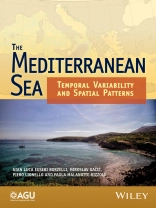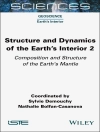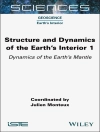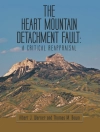Surface, intermediate, and deep-water processes and their interaction in time and space drive the major ocean circulation of the Mediterranean Sea. All major forcing mechanisms, such as surface wind forcing, buoyancy fluxes, lateral mass exchange, and deep convection determining the global oceanic circulation are present in this body of water. Deep and intermediate water masses are formed in different areas of the ocean layers and they drive the Mediterranean thermohaline cell, which further shows important analogies with the global ocean conveyor belt. The Mediterranean Sea: Temporal Variability and Spatial Patterns is a comprehensive volume that investigates the temporal and spatial variability patterns in the ocean basin.
Volume highlights include:
* Discussions of state-of-the-art physical and biogeochemical properties of the Mediterranean Sea
* Multiple physical ocean circulation processes, both in time and spatial scales (basin, sub-basin, and mesoscale)
* How different regional phenomena in the sea influence the biogeochemistry of the basin and the ocean dynamics
* Spatio-temporal variability of the surface circulation in the western Mediterranean
* Deep-water variability and inter-basin interactions in the eastern Mediterranean Sea
* Understanding the link between global ocean circulation patterns and the global climate
The Mediterranean Sea will be a valuable resource for geoscientists, oceanographers, and meteorologists.
İçerik tablosu
Contributors ix
Preface xi
1 Introduction to The Mediterranean Sea: Temporal Variability
and Spatial Patterns
Gian Luca Eusebi Borzelli, Paola Malanotte-Rizzoli, Miroslav
Gacic, and Piero Lionello 1
2 Spatiotemporal Variability of the Surface Circulation in
the Western Mediterranean: A Comparative Study Using Altimetry and
Modeling
Ananda Pascual, Enrique Vidal-Vijande, Simón Ruiz, Samuel
Somot, and Vassilis Papadopoulos 5
3 Exchange Flow through the Strait of Gibraltar as Simulated
by a sigma-Coordinate Hydrostatic Model and a z-Coordinate
Nonhydrostatic Model
Gianmaria Sannino, J. C. Sánchez Garrido, L. Liberti, and
L. Pratt 25
4 Mixing in the Deep Waters of the Western
Mediterranean
Harry Bryden, Katrin Schroeder, Mireno Borghini, Anna Vetrano,
and Stefania Sparnocchia 51
5 The 2009 Surface and Intermediate Circulation of the
Tyrrhenian Sea as Assessed by an Operational Model
E. Napolitano, R. Iacono, and S. Marullo 59
6 The Eastern Mediterranean Transient: Evidence for Similar
Events Previously?
Wolfgang Roether, Birgit Klein, and Dagmar Hainbucher 75
7 Deep-Water Variability and Interbasin Interactions in the
Eastern Mediterranean Sea
Emin Özsoy, Sarantis Sofianos, Isaac Gertman, Anneta
Mantziafou, Ali Aydogdu, Sotiria Georgiou,
Ersin Tutsak, Alex Lascaratos, Artur Hecht, and Mohammed Abdul
Latif 85
8 An Internal Mechanism Driving the Alternation of the
Eastern Mediterranean Dense/Deep Water Sources
Alexander Theocharis, George Krokos, Dimitris Velaoras, and
Gerasimos Korres 113
9 Thermohaline Variability and Mesoscale Dynamics Observed at
the Deep-Ocean Observatory E2M3A in the Southern Adriatic
Sea
Manuel Bensi, Vanessa Cardin, and Angelo Rubino 139
Index 157
Color plate section is located between pages 84 and
85.
Yazar hakkında
Gian Luca Eusebi Borzelli, Space Academy Foundation,
Italy
Miroslav Gaèiæ, National Institute of Oceanography
and Experimental Geophysics, Italy
Piero Lionello, University of Salento, Italy
Paola Malanotte-Rizzoli, Massachusetts Institute of
Technology, USA











